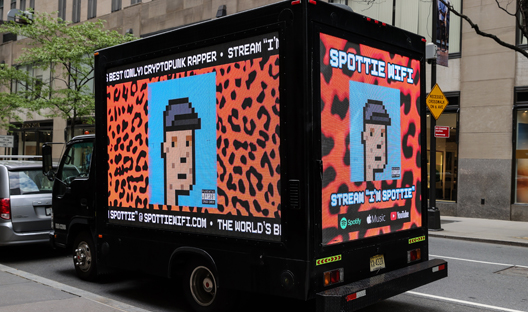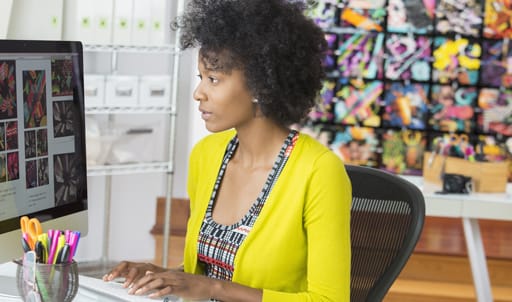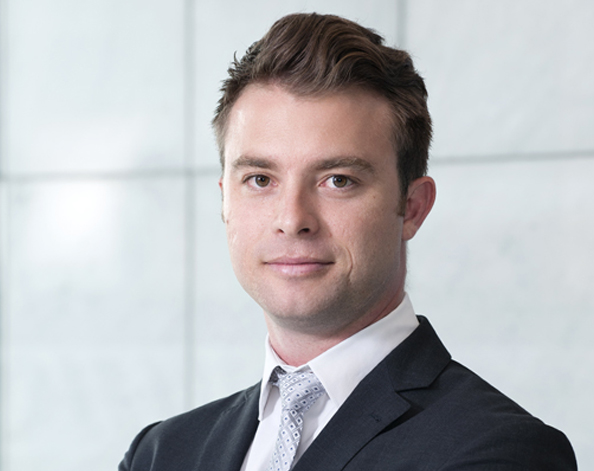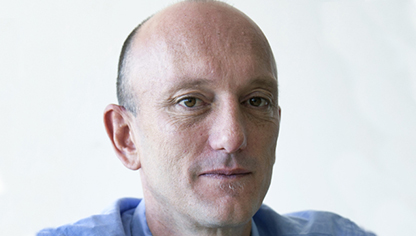Get Focus insights straight to your inbox
Technology and youth are disrupting the status quo of the art world, not only reshaping sedentary categories of art but also redefining how art is sold. Evidence of this disruption abounds.
Alongside the emergence of various forms of dematerialised art online and use of artificial intelligence to create nominally autonomous works, technologies like blockchain and Instagram are reshaping business processes and consumer tastes.
Last October, an anonymous telephone bidder paid $432,500 (R6.2 million) at a New York auction for a fuzzy portrait of a man created in 2018 by a self-learning computer code. The work was billed as the first-ever artificial intelligence (AI) portrait when it went on sale at auction house Christie’s.

Read more: Why the NFT artwork bubble burst
In the heady days of the NFT craze that reached a climax in 2021, jpegs were selling for the same price as an original Van Gogh, and a cat meme was worth more than a Boeing. However, following the fall in the value of crptocurrency, the Non-Fungible Tokens (NFTs) bubble burst and in 2023 the much-hyped new way of buying and selling digital artwork seems like a distant memory.
Conceived by Obvious, a Paris-based collective of art-interested technologists all in their mid-20s, the algorithm behind the portrait was fed on a database of some 15,000 works. While undoubtedly original, the portrait of a Caucasian man named Edmond de Belamy is revealing of a structural bias in art history, something even new-fangled art is not immune to replicating.
Also, Obvious – aka childhood friends Gauthier Vernier, Hugo Caselles-Dupré and Pierre Fautrel – were not the first artists to use generative adversarial networks (GANs) to create art. Critics knowledgeable with GANs dismissed their work as “totally irrelevant” and “a connect-the-dots children’s painting”.
The novel portrait grew out of a project by the trio of friends exploring the uses of AI for creating and recommending art. “We saw algorithms were capable of creating new images, and we were astonished by the potential they had,” Vernier told CNN. Their underlying business plan, though, of using machine logic to mine huge quantities of visual data and propose matches and adaptively doing its own thing, is by no means novel.
“We saw algorithms were capable of creating new images, and we were astonished by the potential they had,” Vernier told CNN.
Arsty, the popular online art website based in New York, was conceived by founder Carter Cleveland while researching AI at university. Much in the way YouTube and retail websites track user behaviour and then make recommendations, Artsy’s algorithm draws connections and maps relationships between artworks. Although free, the site is not entirely altruistic; it includes a retail element.
Online art sales on the rise
Online sales are a growing category in the $63.7 billion global art industry. Big-ticket sales like the gilt-framed AI portrait by Obvious are an exception. Most artworks globally trade for less than $5,000 (R69,000). It is a class of purchase well suited to digital transacting, as it requires less of the ceremony and fuss that goes into selling an A-list artist. It is also more appealing to millennials, a rising category of consumer.
Globally, online sales of art and antiques grew 72% over the past five years, surpassing $5.4 billion in 2017. Strauss & Co, South Africa’s leading auction house, sold R21.7 million online in 2018. Although comparatively small in relation to its own overall turnover of R255 million, and smidgeon of what happens abroad, it is nonetheless indicative of shifting attitudes.

Globally, online sales of art and antiques grew 72% over the past five years, surpassing $5.4 billion in 2017.
Insta art
Gallery websites have long played a role in promoting their artists, but increasingly social media platforms are occupying a gap somewhere between soft promotion and hard sale. Cape Town dealer João Ferreira, whose Hout Street gallery in Cape Town showed William Kentridge and Robert Hodgins in the early 2000s, is one example of a local dealer who has traded a brick-and-mortar address for a hashtag-enabled digital showroom.
Instagram is now widely acknowledged as an important “discovery tool” by serious collectors and millennials alike. For the latter its appeal lies in how it moderates the elitism typically associated with art dealing and buying. “Instagram provides a way for art-hungry millennials to get an art education and make that emotional connection with individual artists,” noted Forbes in 2016.
Instagram is now widely acknowledged as an important “discovery tool” by serious collectors and millennials alike.
It also maps ephemeral connections. Hashtags matter in the art world.
A 2015 survey of collectors’ habits by Artsy found that nearly two-thirds of collectors polled consistently looked at an artist’s hashtag, while just over half had bought works from artists they originally discovered through Instagram.
Blockchain – cutting out the middle man?
True disruption, though, is happening in the realm of blockchain.
“It’s a frictionless global way to buy/sell digital assets, like art, with no need for intermediaries like art brokers or auction houses,” said Chris Becker, head of Blockchain for Investec.
“Where we today must place trust in auction houses as to provenance and authenticity of an artwork and expect them to run a transparent and honest auction process, blockchain solutions will disintermediate the need for auction houses as the artist can prove provenance of a piece publically on a blockchain that is verifiable by everyone.”

It’s a frictionless global way to buy/sell digital assets, like art, with no need for intermediaries like art brokers or auction houses.
Internationally, Christie's became the first leading auction house to record sales via blockchain in 2018 on the blockchain-secured registry Artory.
Dealers recognise the value of blockchain as an oversight tool, although none of South Africa’s major galleries, neither its major auction houses, accept cryptocurrencies – a speculative class of fiat currency built on blockchain – as a valid means of transacting. It is only a matter of time before they have to.
Becker recently acquired a limited-edition digital artwork from New York-based online gallery DADA. The transaction was entirely virtual and paid for with an ethereum “Dapp” browser called Coinbase wallet. His artwork is displayed on a device, although some buyers opt to print their purchases on canvas – much like the AI portrait of Edmond de Belamy.
Digital-only art
Some new forms of collectable digital art resist offline display. Collectors of Dutch-Brazilian artist Rafaël Rozendaal’s vivid digital animations are contractually required to show his domain-specific compositions online. There is a growing appetite among collectors to own such immaterial work.
In 2015, the world’s first auction of code included a work titled Turtle Geometry by MIT computer engineer and Creative Commons founder Hal Abelson. The work is composed of 5302 lines of 6502 Assembly Language presented on a printed stack of dot-matrix computer paper. It dates from 1969, a year after art critics Lucy Lippard and John Chandler famously remarked on the emergence of an “ultra-conceptual art that emphasises the thinking process almost exclusively”.
Collectors of Dutch-Brazilian artist Rafaël Rozendaal’s vivid digital animations are contractually required to show his domain-specific compositions online.
Whether this prophecy will one day translate into a huge market for ASCII art, Flash animations, esolangs (esoteric programming languages) and YouTube remix videos at auctions and on the historical sections of art fairs remains to be seen. The increasing migration of business and pleasure online makes it a distinct possibility. (^_^)
About the author

Sean O'Toole
Art journalist
Sean is a Cape Town-based journalist and editor. He's also a contributor to Investec Focus content for the Investec Cape Town Art Fair. He holds separate degrees in English literature, law, and creative writing.




